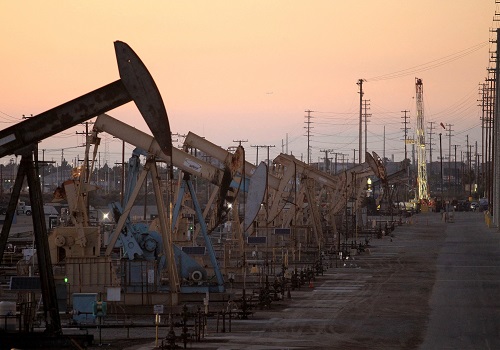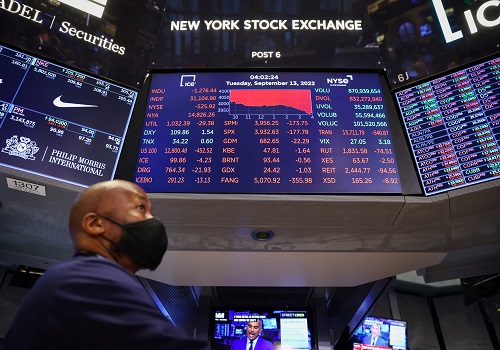Perspective on EXIM Data by Ms. Riya Singh Analyst, Commodities and Currency , Emkay Global

Follow us Now on Telegram ! Get daily 10 - 12 important updates on Business, Finance and Investment. Join our Telegram Channel
Below the Perspective on EXIM Data by Ms. Riya Singh Analyst, Commodities and Currency , Emkay Global
Overview : -
China's recent release of import and export data provides a complex picture of the nation's economic landscape as it navigates the third quarter of 2024. The mixed signals from rising imports and decelerating exports highlight both potential domestic strength and growing global challenges. This review delves into the key points from the data, exploring the implications for China's economy and commodities markets, particularly metals and oil.
1. Import and Export Growth
In July, China's imports grew by 7.2% year-on-year in dollar terms, surpassing the anticipated 3.2% increase. Conversely, export growth slowed to 7%, falling short of the forecasted 9.5%. This resulted in a trade surplus of $84.65 billion for the month. The surge in imports may indicate robust domestic demand, while the slower export growth reflects cooling global demand, a crucial driver for the Chinese economy.
2. External Demand and Trade Surplus
The ongoing slowdown in global demand is evidenced by a third consecutive month of contraction in new export orders, according to China's o?icial manufacturing purchasing managers' index. Despite strong momentum in the electronics sector, overall manufacturing activity has weakened, impacting trade negatively.
3. Commodity Imports and Exports
Despite a sluggish economy and seasonal industrial slowdowns, Chinese imports of metals and power plant fuels remained strong in July. Iron ore imports exceeded 100 million tons, despite high stockpiles and weak steel prices. Unwrought copper imports remained steady, while concentrate imports dropped to their lowest in a year due to tight global supplies. Crude oil imports fell nearly 9% from the previous month, reaching just over 42 million tons. Coal imports surged to over 46 million tons, the highest this year, driven by utilities stocking up for summer demand. Soybean imports dropped below 10 million tons, marking a decline in agricultural commodity demand.
4. Economic Challenges
China's economy faces multiple hurdles, including a prolonged housing slump, weak domestic demand, and increasing trade protectionism from major partners like the US and Europe. The annual import and export figures were bolstered by a low base of comparison from 2023 and more working days in July 2024. However, the outlook for trade remains uncertain as geopolitical tensions and trade conflicts escalate.
Outlook and Impact on the Chinese Economy: -

1. Economic Growth and Policy Responses
China's economic growth for the third quarter now is again expected to be on a softer note considering the latest trade numbers wherein the exports have a slowdown, lack of any prominent measures in China’s third plenum policy meet, and weakness in the recent retail sales data. PBOC and domestic banks post the Third Plenum reduced the one-year loan prime rate (LPR) to 3.35% from 3.45% previously, while the fiveyear LPR was reduced to 3.85% from 3.95%, but it failed to boost any positive rally in the base metals. The Chinese economy had already struggled second quarter of 2024, influenced by the downturn in the property market and fiscal strains at the local government level. The recent data suggest that the nation's reliance on exports may not be sustainable in the long term. The slowdown in exports is also indicating the slowdown in global demand indicative of the recent weak numbers coming out of the US and Europe, who are the major trade partners for Chinese exports. Thus, the likelihood of China achieving 5% looks faltering.
2. Metals Market
Iron ore imports continue to be strong, reflecting the ongoing need for raw materials. However, weak steel prices and high stockpiles indicate potential oversupply issues. Copper imports have been stable, but the global supply constraints are a concern. Aluminum exports have increased, driven by higher overseas demand despite narrowing export premiums.
3. Oil and Energy Sector
Crude oil imports have declined, partly due to reduced refinery run rates and a shift towards electric and gas-powered vehicles. The drop in crude oil demand highlights a potential peak in China's traditional fuel consumption as well as slowing demand. Coal imports, on the other hand, have surged due to high summer demand and healthy import margins. The energy sector's focus on maintaining supply security has supported strong imports of power plant fuels, despite ample inventories.
4. Agricultural Commodities
The demand for agricultural commodities has been subdued, with notable declines in soybean imports and other farm goods. This trend reflects the broader economic slowdown and reduced consumer confidence. The agricultural sector may continue to face challenges as domestic consumption remains weak.
Above views are of the author and not of the website kindly read disclaimer










Tag News

China Unveils Policies to Boost Trade Amid Tariff Worries by Amit Gupta, Kedia Advisory



More News

US Oil drilling costs to reach $67 -$70 per barrel by 2026 - Ventura Securities









